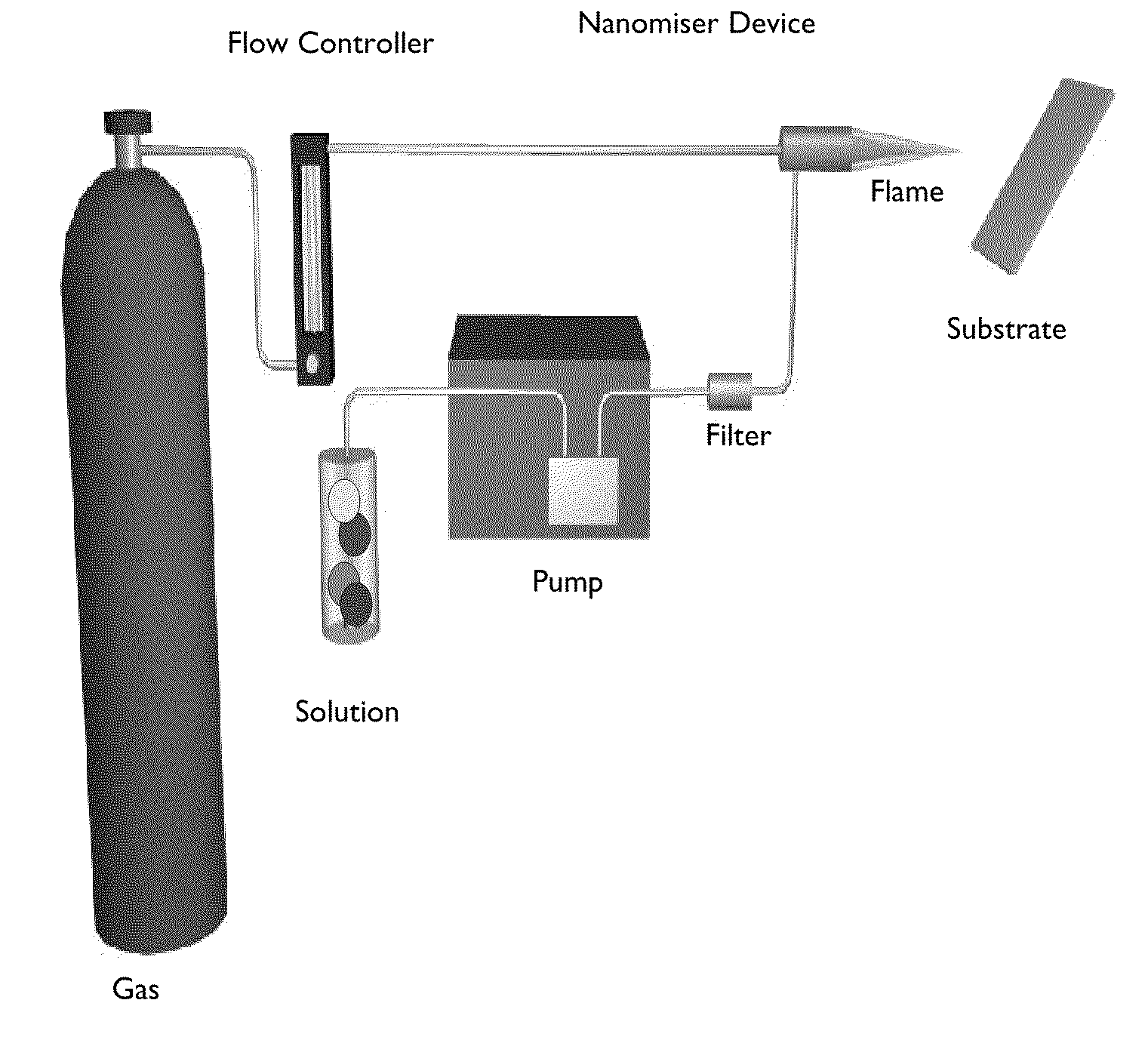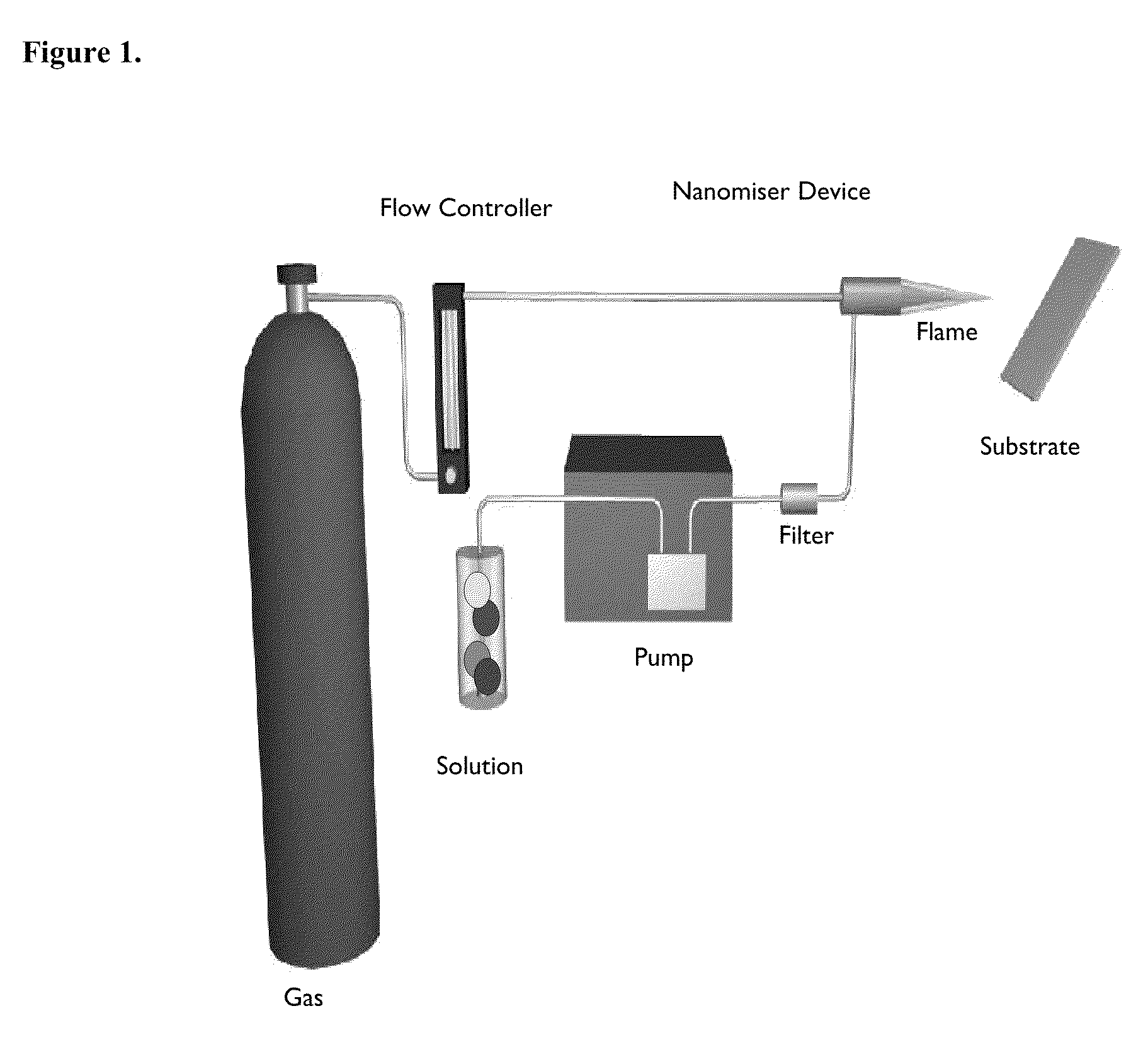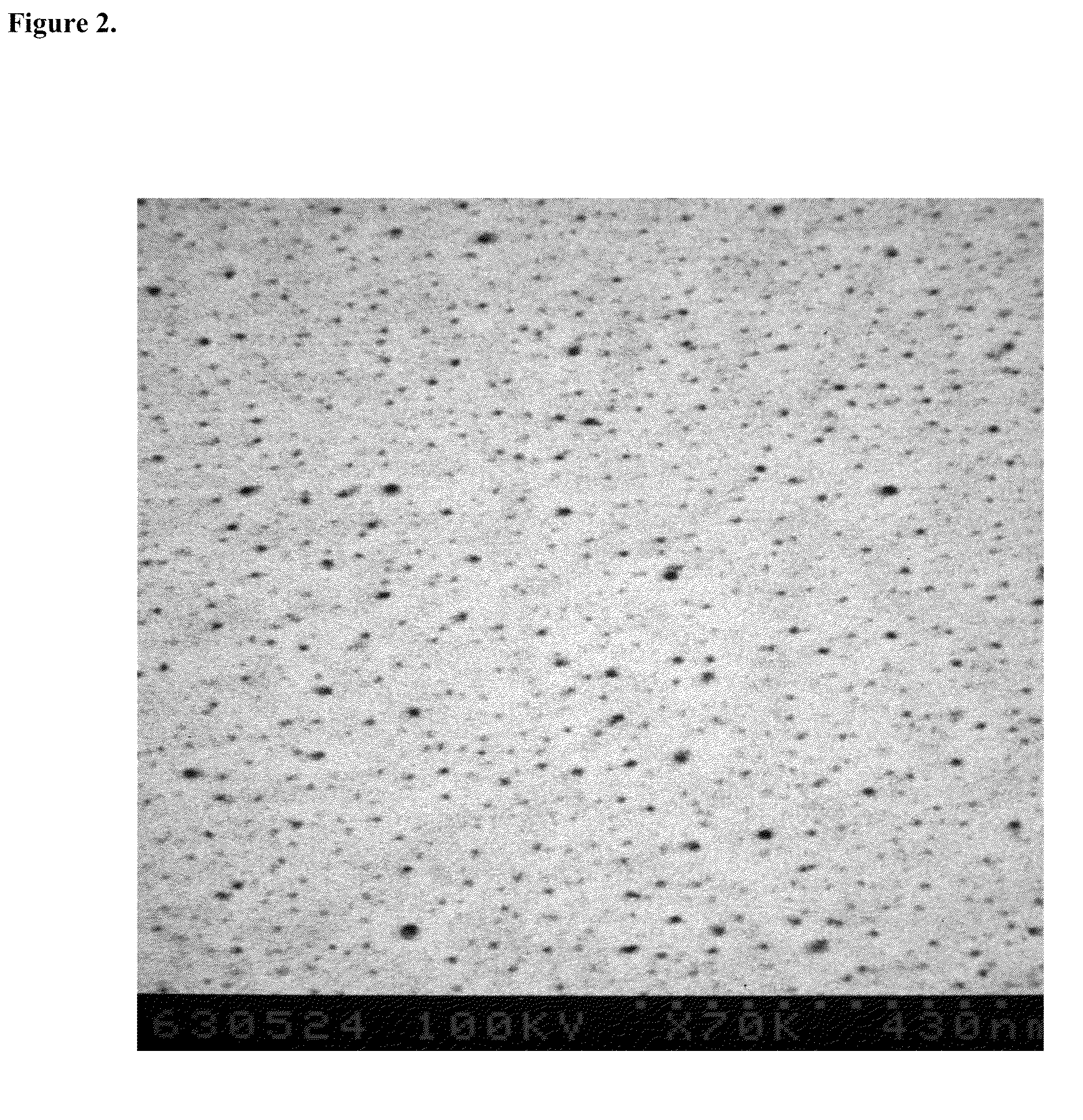Antimicrobial coatings
a technology of antimicrobial coatings and coatings, applied in biocide, instruments, transportation and packaging, etc., can solve the problems of organism-caused decay at the injury site, the shipping and marketing of fresh fruit and vegetable products are very susceptible to the fragility of the product,
- Summary
- Abstract
- Description
- Claims
- Application Information
AI Technical Summary
Problems solved by technology
Method used
Image
Examples
examples
[0042]Microbe tests were performed on Petri dishes coated with example IANs of the present invention and the results showed at least a 99.5% reduction in microbes on the surface. These tests were performed by depositing different ratios of Ag, Zn, and Cu (refer to solution variations A, B, C, with A being 50% Ag and 50% Zn, B being ⅔ Ag and ⅓ Zn, and C being ⅓ each of Ag, Zn, and Cu, with all being oxalates in THF) with different amounts of material (refer to lap column, with higher number reflecting more material). The Code column is the sample ID with C# being the same surface without IAN (control result). For antimicrobial testing, standard plating procedures were followed from the AOAC methods in the FDA / BAM Manual.
Cell Count% ReductionMicrobeCode15 min1 h2 h15 min1 h2 hSolutionLapsSalmonellaWI48A1N / AN / AN / AA12WI48C13099.99999.99999.999A24WI49B199.99999.99999.999B12WI49D130099.99999.99999.999C24C18,700,0009,400,0009,300,000N / AN / AN / AN / A0ListeriaWI48A225,00099.75 99.99999.999A12WI4...
PUM
| Property | Measurement | Unit |
|---|---|---|
| thickness | aaaaa | aaaaa |
| thickness | aaaaa | aaaaa |
| thickness | aaaaa | aaaaa |
Abstract
Description
Claims
Application Information
 Login to View More
Login to View More - R&D
- Intellectual Property
- Life Sciences
- Materials
- Tech Scout
- Unparalleled Data Quality
- Higher Quality Content
- 60% Fewer Hallucinations
Browse by: Latest US Patents, China's latest patents, Technical Efficacy Thesaurus, Application Domain, Technology Topic, Popular Technical Reports.
© 2025 PatSnap. All rights reserved.Legal|Privacy policy|Modern Slavery Act Transparency Statement|Sitemap|About US| Contact US: help@patsnap.com



